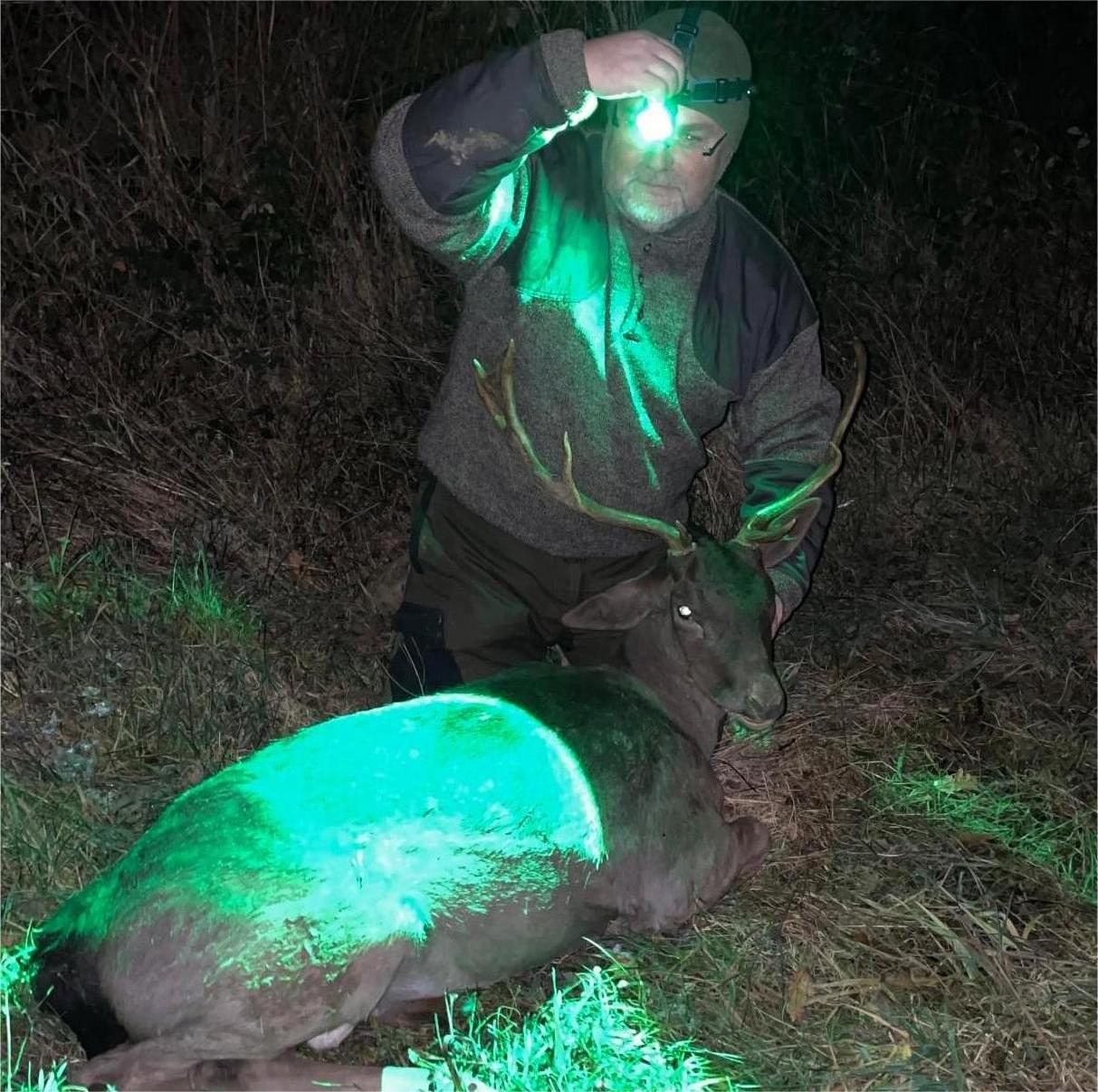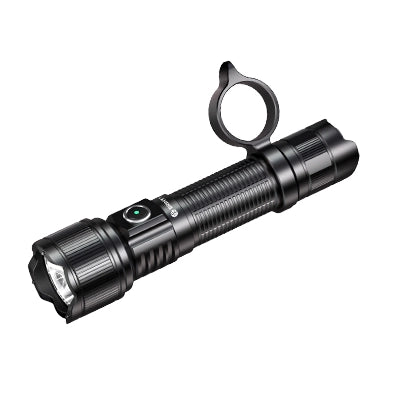Introduction
Imagine, if you were to carry out a mission, track prey, or even just go on an outdoor adventure in the pitch-dark night, what would you need most?
The answer is most likely—light.
Light not only enables people to see, but also brings a sense of security and tactical advantages. Today's tactical flashlight may seem like just a small piece of equipment, but behind it lies a development history spanning over a hundred years. Next, let's take a look together at how this evolutionary path of illuminating the night has been traversed, from torches to modern tactical lighting.
Ancient Times: The Era of Firelight and Oil Lamps
The earliest lighting was very primitive—torches, pine nuts, and oil lamps. In ancient wars, torches were used for night raids or camp defenses, but they had a fatal flaw: they were easy to extinguish, not portable enough, and not safe enough (Needham, 1962). Oil lamps were slightly more durable, but still unsuitable for carrying around, let alone dealing with complex tactical environments.
This early limitation put forward demands for later portable lighting tools: they should be compact, weather-resistant, and instantly available.

The Late 19th Century: The Birth of the First Flashlight
The electrical age brought about brand-new possibilities. In 1899, the American inventor David Misell patented the first portable battery flashlight (U.S. Patent No. 617,592, 1899).
At that time, due to limited battery capacity, the light could only “flash briefly,” which is why it was called a “flashlight” (Wolff, 2005).
Although it was not very bright and had a short runtime, this was the first time humans had a portable electric light source—the ancestor of today's tactical flashlights.

(From: https://en.wikipedia.org/wiki/Flashlight)
World Wars: The Initial Emergence of Tactical Applications
During World War I, flashlights were mainly used for illumination and signaling. The true tactical applications emerged during World War II:
The TL-122 Angle Flashlight (U.S. military): Its right-angle design allowed soldiers to attach it to the shoulder strap or gear, leaving hands free for weapon handling (Wikipedia, “Fulton MX-991/U Flashlight”).
German Powered Flashlight: It could generate electricity by cranking a handle, solving battery shortages on the battlefield (Wikipedia, “Mechanically powered flashlight”).
Although these were not yet true tactical flashlights, the battlefield environment had already forced flashlights to transform in a tactical direction.
The Cold War Era: The Integration of Flashlights and Tactics
During the Cold War era, law enforcement and special operations increasingly emphasized night operations. The combination of shooting postures and flashlights began to gain popularity.
For example, the FBI grip and the Harries technique allowed shooters to effectively utilize flashlights while holding a firearm (Inforce Blog, 2020).
Meanwhile, flashlights themselves became brighter, stronger, and more reliable—laying the foundation for modern tactical flashlight technology.
1970s–1990s: Modern Tactical Flashlights Make Their Debut
The real turning point arrived in this era:
Kel-Lite (1968): The first all-aluminum heavy-duty flashlight, used as both a light and a baton by police officers (Wikipedia, “Kel-Lite”).
Maglite (1979): Durable, shock-resistant, and focus-adjustable, it became a near-standard for police and outdoor users (Wired, 2019).
SureFire (1979): Pioneered high-performance compact flashlights and the first weapon-mounted lights, transforming flashlights into true tactical tools (Wikipedia, “SureFire”).
These innovations officially brought tactical flashlights onto the historical stage and shaped the future of portable tactical lighting.

Modern Era: The LED Revolution and Smart Features
In the 21st century, LED technology completely changed the game. LEDs offer higher brightness, lower power consumption, and stronger durability (Nightbuddy, 2023).
Modern tactical flashlight often feature:
Strobe mode for disorienting threats.
Infrared illumination for use with night vision devices.
Remote pressure switches for compatibility with firearms.
Modular designs to mount on rail systems such as AR platforms (Wikipedia, “Tactical Light”).
For example, firearm enthusiasts often search for the best tactical flashlight for AR-15 or specifically look for an AR-15 tactical flashlight to enhance their rifle setups.
At the same time, emerging brands introduced USB-C charging, intelligent battery management, and lightweight builds, redefining what consumers expect from the best tactical flashlight on the market (EDC Asia, 2022).
Case Study: Comparing Modern Tactical Flashlights with Brinyte
To understand these features more intuitively, let's compare them with several flashlights from Brinyte's tactical series:
Brinyte PT16A Tactical Flashlight
Balanced tactical flashlight with up to 2000+ lumens and long-range beam.Dual-tail switches for instant strobe and fast mode changes.
Weapon-mount compatible, making it a strong AR-15 tactical flashlight option.
USB-C charging and durable design ensure reliability for both professionals and outdoor users.
Brinyte PT28 Oathkeeper
High lumen output, suitable for law enforcement and patrol scenarios.
Rear tactical switch + strobe mode enables one-click defense.
USB-C fast charging meets the needs of modern users.

Brinyte T18 Artemis
Designed for hunting, supporting white, red, and green light.
Modular structure fits rail systems and remote switches.
Can be compared to popular models like the Night Spark Tactical Flashlight, but offers greater versatility for hunters.

Brinyte XP22 Tactical Rail-Mounted Light
Compact dual-head tactical light with 1300 lumens output.
Features momentary-on and strobe modes for rapid tactical response.
Designed specifically as a rail-mounted flashlight for pistols and rifles, ensuring secure fit and quick deployment.
Lightweight yet rugged build, ideal for law enforcement, personal defense, and professional shooters.

Through this comparison, we see three major trends in today's best tactical flashlight:
Smarter (USB-C, battery management, mode switching).
More professional (specific designs for law enforcement, hunting, and rescue).
More tactical (weapon light compatibility, strobe defense).
These are precisely the design principles behind Brinyte's product line.
Conclusion: Light is Power
From torches to LED-powered tactical flashlights, humanity's need for light has never changed—it's only the tools that have evolved.
If the ancient torch symbolized guarding the night, the modern tactical flashlight has become a powerful tool for law enforcement, hunters, adventurers, and anyone needing dependable illumination.
Looking forward, with intelligent sensors, laser lighting, and even AI integration, the next generation of tactical flashlight will only become more advanced.
In the darkness, light is power.
👉 Want to experience the features of the best tactical flashlight for your needs? Browse the Brinyte Tactical Flashlight Series and find your ultimate lighting partner.
References
- Needham, J. (1962). Science and Civilisation in China, Vol. 4. Cambridge University Press.
- Misell, D. (1899). U.S. Patent No. 617,592. Washington, DC: U.S. Patent and Trademark Office.
- Wolff, M. (2005). Flashlights and Their Development. Smithsonian Institution Archives.
- Wikipedia. “Tactical Light.” https://en.wikipedia.org/wiki/Tactical_light
- Wikipedia. “Fulton MX-991/U Flashlight.” https://en.wikipedia.org/wiki/Fulton_MX991/U_Flashlight
- Wikipedia. “Mechanically Powered Flashlight.” https://en.wikipedia.org/wiki/Mechanically_powered_flashlight
- Wikipedia. “Kel-Lite.” https://en.wikipedia.org/wiki/Kel-Lite
- Wired. (2019). The Benchmark Maglite and Its History. https://www.wired.com/story/benchmark-maglite-history
- Wikipedia. “SureFire.” https://en.wikipedia.org/wiki/SureFire
- Inforce Lights. (2020). The Evolution of Tactical Lighting. https://inforcelights.com/blogs/inforce-blog/the-evolution-of-tactical-lighting
- Nightbuddy. (2023). The Evolution and History of Flashlights. https://www.nightbuddy.co/blogs/news/evolution-and-history-of-flashlights
- EDC Asia. (2022). Nitecore History and Innovations. https://www.edcasia.co/blogs/news-the-edc-everyday-carry-blog/nitecore-history




